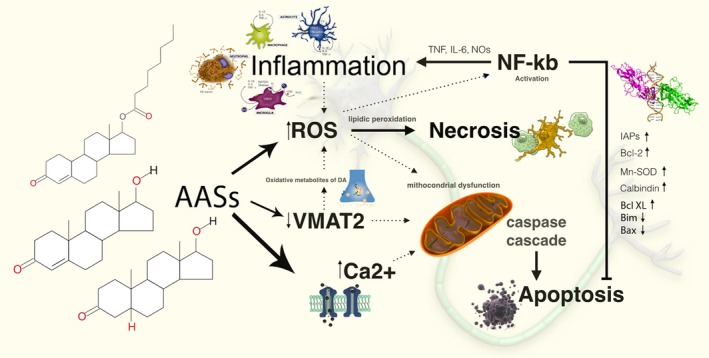Figure 7.

Mechanisms of the neuropathological effects of AASs: evidence has shown the recurrence of increased neuronal susceptibility to apoptotic stimuli as a source of the neurodegenerative and neurotoxic potential of these compounds. ROSs represent a serious hazard for cells, because they are powerful oxidizing molecules able to damage proteins, lipids and DNA. ROSs act as second messengers in various biological responses, among which the induction of programmed cell death is of paramount importance in our understanding of many common diseases and degenerative conditions. Growing evidence suggests that endogenous ROS may play an activating role in NF‐kB signalling, and above a certain threshold, they may negatively impact upon this signalling. ROS are thought to have an inhibitory effect on NF‐kB activity.
